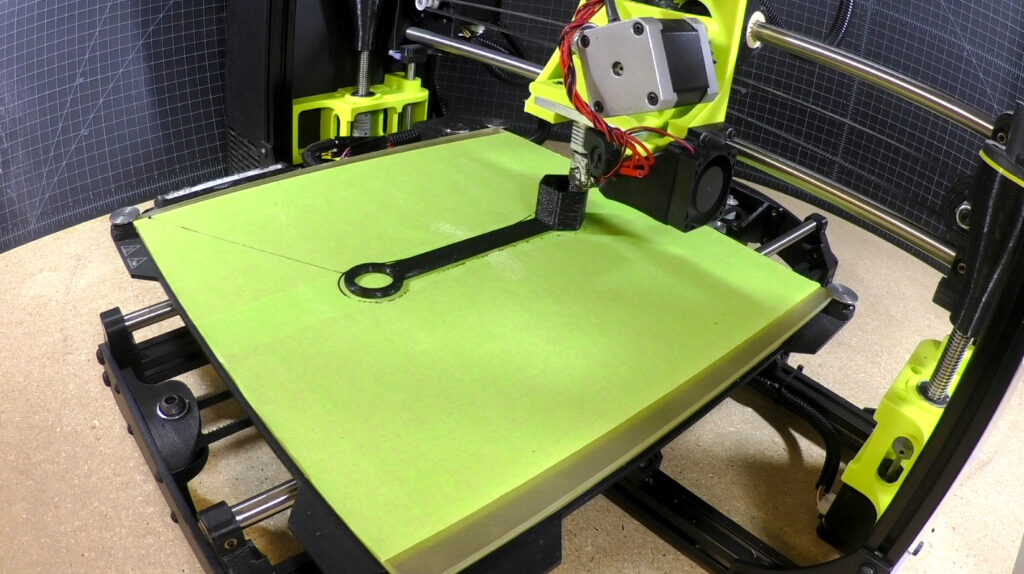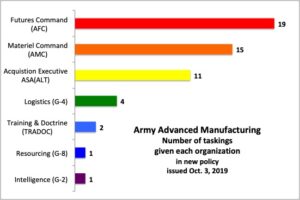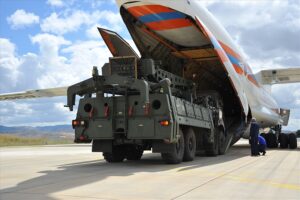By SYDNEY J. FREEDBERG JR.
A 3D printer creates a hard-to-find spare part for Army MRAP armored trucks.
 WASHINGTON: Army Secretary Ryan McCarthy issued detailed marching orders this morning for how the service should embrace advanced manufacturing and encourage contractors to adopt it as well. That includes writing official requirements for future weapons and source-selection criteria for contract competitions to encourage the use of 3D printing and related techniques. While the focus is on new procurements, the policy also calls for advanced manufacturing of spare parts to better sustain aging equipment, for which the original suppliers may have gone out of business.
WASHINGTON: Army Secretary Ryan McCarthy issued detailed marching orders this morning for how the service should embrace advanced manufacturing and encourage contractors to adopt it as well. That includes writing official requirements for future weapons and source-selection criteria for contract competitions to encourage the use of 3D printing and related techniques. While the focus is on new procurements, the policy also calls for advanced manufacturing of spare parts to better sustain aging equipment, for which the original suppliers may have gone out of business.
Ryan McCarthy
“Capability developers, with input from technical subject matter experts, will write performance and readiness capability requirements to account for gains that can be made using advanced methods and materials,” the policy directs. “Materiel developers will [use] source selection evaluation factors that favor performance and readiness gains, cost reductions, and schedule reductions that can be achieved using advanced manufacturing.”
Breaking Defense graphic from Army data
Marching Orders for Everyone
 Packed into the new policy’s 16 pages are 53 specific taskings for the Army’s civilian acquisition chief; its four-star commanders for future modernization, current materiel, and training; and its three-star deputy chiefs of staff for intelligence, logistics, and resourcing.
Packed into the new policy’s 16 pages are 53 specific taskings for the Army’s civilian acquisition chief; its four-star commanders for future modernization, current materiel, and training; and its three-star deputy chiefs of staff for intelligence, logistics, and resourcing.
For a half century, DRS has provided military forces around the world with advanced technologies and capabilities to meet their mission needs. Here are some highlights.
From LEONARDO DRS
Bruce Jette
 The Army’s civilian acquisition chief, Assistant Secretary for Acquisition, Logistics, & Technology Bruce Jette, has the lead on advanced manufacturing policy:
The Army’s civilian acquisition chief, Assistant Secretary for Acquisition, Logistics, & Technology Bruce Jette, has the lead on advanced manufacturing policy:
ASA(ALT) will revise the requisite Army regulations within the next two years.
ASA(ALT) will develop a detailed implementation plan for the policy, with input from Army Materiel Command, Army Futures Command, and the Deputy Chief of Staff for Logistics (G-4).
And ASA(ALT) will develop an implementation plan specifically for digital engineering. That’s the practice of using detailed computer designs, models, and simulations for everything from blueprints to maintenance, which will now be required “throughout all phases of the acquisition lifecycle to the maximum extent practical.”
Gen. John Murray, first chief of Army Futures Command, speaks at its formal activation in Austin.
Gen. Mike Murray, chief of the year-old Army Futures Command, will also play a major role:
 Norway suspended new applications for military export licenses to Turkey today. Norway is also reviewing all current licenses for Turkey for military and multi-use military export licenses.
Norway suspended new applications for military export licenses to Turkey today. Norway is also reviewing all current licenses for Turkey for military and multi-use military export licenses.
With input from the assistant secretary for acquisition, Army Materiel Command, and the Deputy Chief of Staff for Intelligence (G-2), Futures Command will write the strategy to grow Army capabilities for additive manufacturing — and to protect those capabilities. “Protection” from what isn’t made explicit, but given this is to be a “threat-based strategy,” and the Pentagon has publicly identified Russia and China as the principal threats, cyber-espionage and sabotage are undoubtedly key concerns.
AFC, which took over the Army’s R&D labs from Army Materiel Command, will become the Army’s “technical authority” for research, development, and engineering related to advanced manufacturing. AFC will invest in developing new technologies and mature them until they can be used by ASA(ALT)’s procurement programs and Army Materiel Command’s sustainment programs.
AFC now controls the writing of requirements for future weapons — formerly done by the Training & Doctrine Command (TRADOC) — and those requirements must henceforth reflect “performance and readiness gains that can be made using advanced manufacturing methods and materials.”
AFC plays a major role in outreach to the private sector, so it will work with industry bodies to establish standards and best practices.
While Army Materiel Command gave up its R&D labs to Futures Command, it still plays a leading role in sustaining the equipment the Army already has. In particular, AMC runs the Army’s organic industrial base — maintenance depots, arsenals, ammunition plants.
AMC will establish an “advanced manufacturing center of excellence” within that infrastructure.
AMC will also develop a capital improvement plan to upgrade the industrial base’s advanced manufacturing capabilities.
AMC will coordinate education and training for the organic industrial base workforce in how to use the new equipment and techniques.
TRADOC, while it gave its requirements-writing responsibilities over to Futures Command, will develop doctrine and training for military personnel who need to employ advanced manufacturing. That would affect everyone from generals running acquisition in the Pentagon to sergeants trying to 3D print spare parts in the field.
Other orders fall equally on multiple organizations:
The assistant Army Secretary for acquisition, Army Futures Command, and Army Materiel Command will together write requirements for what’s called a “digital thread” — a specific kind of digital engineering intended to carry through a weapon’s entire life cycle from the initial concept through production and maintenance.
A different set of players — TRADOC and the deputy chief of staff for logistics, plus Materiel and Futures Command — will study “uses of advanced manufacturing at the tactical level to reduce the logistics footprint.” That implies expedients like 3D printing spare parts as needed in the field, rather than having a long supply line and bulky inventories of every possible part that might be required. While meeting standards for reliability and safety will be a tremendous challenge, printing parts this way could allow combat units to keep fighting even when cut off from resupply — something the Army expects will happen more and more on the dispersed, chaotic battlefields of the future.
The timeline of Leonardo DRS’s 50 years of innovation is peppered with notable technologies and capabilities that have given militaries around the world a warfighting edge. Here’s a look.


No comments:
Post a Comment